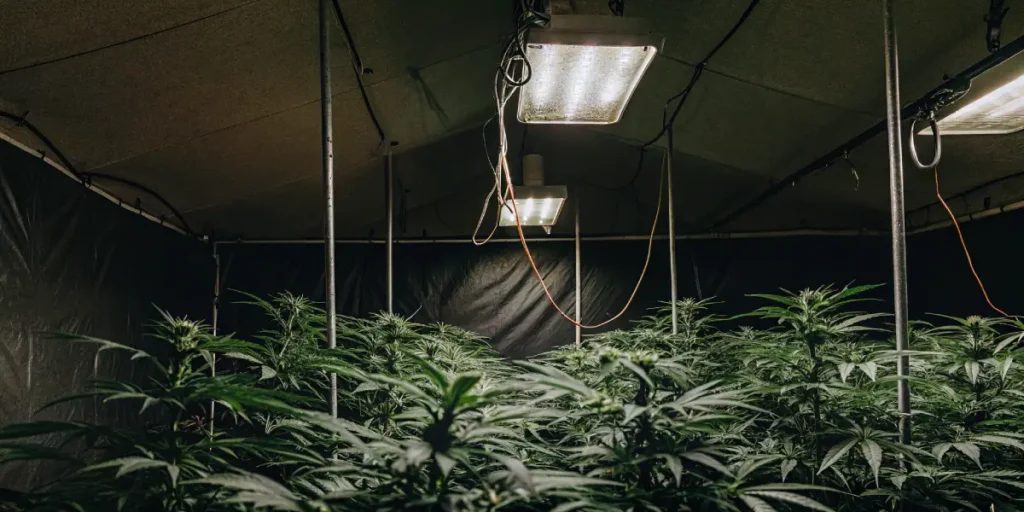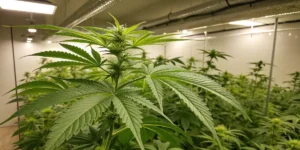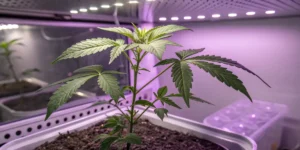Desfran is a distinctive cannabis strain known for its pure Sativa lineage and robust growth characteristics. Originating from South America, Desfran has gained global popularity for its potent effects and sweet fruit flavors. Cultivating Desfran requires knowing its specific needs, as it can be more demanding than hybrid or indica strains. Preparing properly for the growing process ensures a successful harvest and maximizes yield and quality. This guide will walk you through each necessary step for growing Desfran effectively.
The first step in growing Desfran is selecting the appropriate growing environment. Due to its Sativa characteristics, Desfran plants can grow quite tall, making it essential to have sufficient vertical space. When growing indoors, consider a grow tent or room with a ceiling height of at least 2 meters. Ensure that the space is equipped with adequate lighting—full-spectrum LEDs or HID lights are recommended to provide the necessary intensity and spectrum during both vegetative and flowering stages.
Next, focus on the growing medium and nutrients. Desfran thrives in well-aerated soil enriched with organic matter. You can also use coco coir mixed with perlite to enhance drainage and oxygenation. Start with a balanced nutrient mix formulated for cannabis and adjust according to the plants’ response as they grow. Desfran is a heavy feeder, particularly during the flowering stage, so closely monitor nutrient levels and adjust phosphorus and potassium as needed to promote dense bud development.
Once your growing environment is set, proceed to germinate the seeds. Desfran seeds can be germinated using the paper towel method: place the seeds between moist paper towels in a warm, dark place and wait for taproots to appear. This typically takes 24-48 hours. Once germinated, transfer the seedlings to small pots filled with your chosen medium, and place them under grow lights to begin the vegetative stage.
Throughout the vegetative stage, which typically lasts 4-6 weeks, focus on canopy management to maintain even light distribution. Techniques like topping and low-stress training (LST) are beneficial for Desfran as they promote lateral growth and manage the plant’s height. Ensure environmental conditions are optimal: maintain temperatures between 20-28°C and humidity levels around 60-70% during this stage.
As the plants transition to the flowering stage, adjust the light cycle to 12 hours of light and 12 hours of darkness to stimulate bud formation. This stage lasts approximately 9-10 weeks, during which it’s critical to reduce humidity to around 40-50% to prevent mold. Monitor plants closely for signs of nutrient deficiencies or pests, and respond promptly to maintain healthy growth.
Finally, harvest your Desfran plants when the trichomes are milky with a few turning amber, typically 9-10 weeks into the flowering phase. Carefully cut the branches, trim the leaves, and hang them in a dark, well-ventilated space to dry. Proper drying and curing enhance the flavor profile and potency of Desfran, ensuring a top-quality product. With diligence and attention to detail, growing Desfran can be a rewarding endeavor for any cannabis enthusiast.
Desfran Strain Overview: Traits, Effects & Genetics
desfran is a renowned cannabis strain celebrated for its potent Sativa characteristics and award-winning lineage. It is derived from the crossing of two legendary strains: Destroyer and a native Colombian strain, lending it a rich genetic heritage that enthusiasts appreciate. Known for its impressive resin production and vigorous growth, desfran captures the hearts of growers and consumers alike, making it a prominent choice among cannabis cultivators who seek a high-yielding plant with excellent psychoactive effects.
This strain’s distinct physical traits make it stand out, characterized by its tall stature and elongated slim leaves that are typical of Sativa varieties. Growers favor desfran for its robust structure and adaptability, thriving best in warm and sunny climates, which mimic its native environment. As a photoperiod strain, it requires a knowledgeable hand to manipulate light cycles effectively, ensuring optimal blooming and resin production. Indoor growers can also enjoy its bounty with proper management, though space is often necessary due to its potential to grow significantly.
When it comes to effects, desfran is revered for its mind-expanding properties. Delivering a cerebral high that is both intense and exhilarating, this strain is perfect for those seeking a creative and energetic experience. It is well-suited for daytime use, as it promotes an uplifting mood, sparking creativity, and providing an overwhelming sense of euphoria. However, novice users should exercise caution due to its potent effects, which may lead to overstimulation if consumed in high quantities.
In terms of aromas and flavors, desfran delights the senses with a complex profile that features a blend of fruity and floral notes. Its smoke carries a rich mix of pear and green apple undertones, with a sweet and spicy finish that lingers on the palate. This exotic flavor combination is a testament to its South American roots, offering a taste journey that avid cannabis connoisseurs find irresistible.
Overall, desfran is a celebrated strain for those seeking a touch of the exotic, with its powerful Sativa-driven effects and captivating flavor profile. Whether you’re a grower or consumer, the rich history, robust genetics, and uniquely captivating experience of desfran make it a staple in both cultivation and consumption circles.
Optimal Environment to Grow Desfrán Successfully
Desfrán, a renowned strain celebrated for its potent effects and rich heritage, demands specific environmental conditions to unlock its full potential. This sativa-dominant strain, with origins rooted in South America, thrives particularly well in tropical and subtropical climates. Providing an environment that mimics these natural conditions can significantly enhance growth, yield, and potency. Therefore, a careful balance of temperature, humidity, light, and nutrient supply is crucial to cultivating Desfrán successfully.
Temperature plays a pivotal role in the development of Desfrán. Ideally, this strain flourishes at temperatures between 70°F to 85°F (21°C to 29°C). Maintaining this range during both day and night cycles prevents thermal stress, which can hinder growth. Nights that are slightly cooler help in the synthesis of terpenes, contributing to the strain’s aromatic profile. It is essential to avoid excessive heat, as it can lead to wilting and a decrease in the potency of the plant.
Humidity management is equally vital when growing Desfrán. During the vegetative phase, relative humidity should be maintained between 60% to 70%. As the plant transitions into the flowering stage, reducing the humidity to around 40% to 50% is recommended. This reduction prevents mold and mildew from developing, which can be detrimental to the plant’s health. Utilizing dehumidifiers or proper ventilation systems can aid in keeping humidity levels within these optimal ranges.
Proper lighting is essential to the growth cycle of Desfrán, given its sativa nature that tends to stretch and grow tall. A high-intensity discharge lamp or LED grow lights that simulate natural sunlight can be advantageous. During the vegetative phase, light cycles should remain on an 18/6 hour schedule (light/dark), followed by a 12/12 hour schedule during flowering to promote budding. Adjust the distance between lights and canopy to prevent light burn.
Moreover, ensuring an adequate nutrient supply tailored to Desfrán’s sativa needs will encourage robust growth and prevent nutrient lockout. A nitrogen-rich fertilizer is beneficial during the vegetative stage, while a phosphorus-heavy fertilizer supports flowering. Monitoring pH levels, ideally between 6.0 and 6.5, ensures nutrients are absorbed efficiently, preventing deficiencies and promoting overall plant health.
Growing Desfrán successfully requires meticulous attention to its environmental needs. By simulating its native tropical conditions through controlled temperatures, humidity, lighting, and nutrition, growers can achieve a thriving crop. Following these guidelines will enable cultivators to harvest a potent and aromatic Desfrán yield, exemplifying the strain’s true potential.
Grow Room Setup for Desfran Plants
Desfran, a pure Sativa strain, thrives best in well-optimized indoor environments. Designing an effective grow room for Desfran entails understanding its specific needs, primarily driven by its Sativa lineage, which includes a penchant for vertical growth and a considerable flowering stretch. First and foremost, space consideration is paramount. Desfran plants can soar upwards due to their natural growth patterns, forming long, bushy branches. Therefore, setting up a grow room with a tall ceiling or adjustable lighting and shelving systems is essential to accommodate their vertical nature. Investing in a grow tent with reflective walls can also optimize light usage for better overall plant health.
Lighting is crucial when cultivating Desfran indoors. High-intensity discharge lamps, such as HPS or LED lighting systems, are recommended for their ability to mimic the sun’s intensity and spectrum. Desfran plants require a considerable amount of light due to their tropical origin. A lighting schedule of 18 hours of light and 6 hours of darkness during the vegetative stage helps achieve vigorous growth. During flowering, switching to a 12/12 light-dark cycle is essential. Ensuring the right distance between the light source and the plant canopy will prevent light burn while encouraging robust growth.
Ventilation and air circulation are critical in preventing mold and pests due to Desfran’s dense foliage. Implementing oscillating fans within the grow room will promote air exchange and reduce the likelihood of stagnant air pockets. This aids in maintaining a consistent temperature and humidity level, ideally around 70-85°F (21-29°C) with a relative humidity of 40-50% during flowering. An exhaust fan with a carbon filter system will help mitigate unwanted odors and control humidity levels, safeguarding the plants from potential issues.
Temperature and humidity must be monitored carefully in a Desfran grow setup. Using thermometers and hygrometers can help in maintaining optimal growing conditions. Desfran prefers a warm climate with temperatures ranging from 70°F to 85°F (21°C to 29°C). During flowering, it’s advisable to reduce the nighttime temperatures slightly to simulate natural conditions, which can enhance bud development and resin production. Installing a thermostat can automate the climate control system, ensuring the environmental parameters remain within the ideal range at all times.
The grow room should also include a suitable choice of growing medium and containers. Desfran can be cultivated in soil or hydroponic systems, with soil being more forgiving for beginners. Using large pots will provide the root space needed for optimal growth. Nutrient-wise, a balanced fertilizer regimen enriched with nitrogen during the vegetative stage and phosphorus and potassium during flowering will promote healthy plant development. Regular monitoring and adjustments based on plant response will ensure Desfran yields are both potent and plentiful.
Indoor Growing Tips for Desfran
Desfran, a sativa-dominant cannabis strain, is renowned for its potent effects and vigorous growth. When cultivating Desfran indoors, it is crucial to understand its unique requirements to optimize yield and potency. The strain thrives in a controlled environment where light intensity, temperature, and humidity can be precisely managed. To start, ensure that your indoor setup includes high-quality grow lights, such as LED or HID, which can mimic the sun’s spectrum and promote robust vegetative and flowering stages.
Temperature management is another critical factor in growing Desfran indoors. This strain prefers a warm climate, so maintain daytime temperatures between 70 and 85 degrees Fahrenheit (21-29°C). Nighttime temperatures should be slightly cooler, ideally between 60 and 70 degrees (15-21°C). Such conditions help to replicate Desfran’s natural environment, encouraging optimal growth. Additionally, monitor humidity levels carefully, especially during the flowering phase, to prevent mold and mildew formation. Aim for 40-50% humidity during flowering for best results.
Desfran is known for its long flowering time, typically ranging from 9 to 11 weeks. Patience is key when growing this strain as the extended flowering period allows buds to develop fully, maximizing potency and flavor. As the plant matures, it is advisable to prune excess foliage to improve air circulation and light penetration, which can enhance the quality and quantity of the yield. Proper pruning can also help manage the plant’s natural tendency to grow tall, making it better suited for indoor spaces.
An effective nutrient regimen is essential for Desfran. During the vegetative stage, focus on fertilizers rich in nitrogen to support vigorous leaf and stem development. As the plant transitions to flowering, switch to a formula higher in phosphorus and potassium to encourage bud formation. Ensuring a balanced pH level between 6.0 and 7.0 is vital to nutrient uptake and overall plant health. Regularly checking and adjusting these factors can prevent nutrient lockout and other common cultivation issues.
Finally, consider incorporating organic growing techniques to enhance the natural flavors and potency of Desfran. Using organic soil and fertilizers not only benefits the plant but also contributes to a healthier indoor ecosystem. This approach, combined with careful observation and adjustment of environmental factors, will help you achieve a successful indoor Desfran harvest characterized by high yields and superior cannabinoid content.
Outdoor Growing Tips for desfran
Desfran is a sativa-dominant strain renowned for its vigorous growth and impressive yields, making it an excellent choice for outdoor cultivation. When planning to grow Desfran outdoors, it is important to consider the climate conditions that best suit this strain. Desfran thrives in warm, sunny environments, mimicking the equatorial climates found in its landrace origins. Regions with long summer days will see the best results, allowing the plant to reach its full potential.
One major consideration for outdoor cultivation of Desfran is its sensitivity to humidity. While the plant is generally resistant to common pests and diseases, high humidity levels can increase the risk of mold during the flowering stage. To mitigate this, ensure your growing area has adequate airflow. Position your plants in a location that allows plenty of breeze to pass through, and consider pruning lower branches to improve air circulation within the plant structure, reducing humidity-induced risks.
Due to its sativa genetics, Desfran can grow quite tall, sometimes reaching heights of up to three meters. Prepare for this by providing ample vertical space and support. Stake your plants early on to help manage their height and to prevent them from toppling over under the weight of their hefty colas. Additionally, spacing your plants adequately will give them enough room to spread their branches and access sunlight without competing with neighboring plants. Keep this in mind when selecting your planting site.
Feeding Desfran requires a balanced nutrient schedule, particularly during the flowering phase. Start with a nitrogen-rich fertilizer during the vegetative phase, then transition to phosphorus and potassium-rich formulas as the plant enters flowering. Organic fertilizers and soil amendments such as compost and bat guano can enhance growth, yielding larger, more potent buds. Monitoring soil pH regularly is also crucial to maintain nutrient uptake efficiency for Desfran.
Harvest time for Desfran typically falls around late October, though this can vary depending on local climate conditions. Keep a close eye on bud development to determine optimal harvest timing. Trichomes should be milky white with some turning amber for peak potency. Prepare to harvest before any severe weather sets in, which could potentially damage your plants or reduce yield quality. Careful planning and monitoring will ensure a successful Desfran cultivation season.
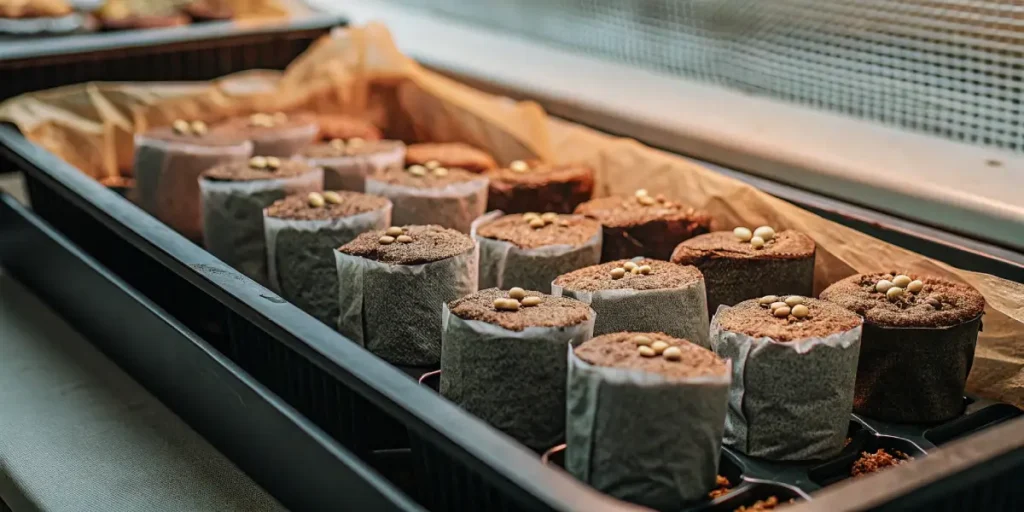
How to Germinate & Propagate Desfran
Desfran, a popular and award-winning sativa strain, is known for its robust growth and potent effects. Germinating and propagating Desfran can be a rewarding and fruitful endeavor for both novice and experienced cannabis growers. The process begins with acquiring high-quality seeds, essential for ensuring healthy plants. Always source your seeds from reputable suppliers to guarantee their viability and adherence to genetic standards. This foundational step sets the stage for successful germination and propagation of your Desfran plants.
The germination process for Desfran involves several key steps to ensure optimal growth conditions. Start by placing seeds between two moist paper towels on a plate, covering them with another plate to create a dark and humid environment. Keep the setup at a temperature between 70-85°F (21-29°C) and ensure the towels remain moist but not overly saturated with water. After 3-7 days, the seeds should begin to sprout. At this stage, handle the delicate seeds with care as they transition into seedlings.
Once germinated, transfer the sprouted seeds carefully into a well-aerated growing medium such as soil or a hydroponic setup. Ensure adequate spacing between seedlings for optimal root expansion and access to nutrients. Applying a light nutrient mix can promote healthy growth, but it is crucial not to oversaturate the young plants. Use gentle, indirect lighting initially, transitioning to more direct light as the seedlings grow stronger. Monitoring humidity and temperature remains integral throughout this phase to foster vigorous young plants.
Propagating Desfran from cuttings involves selecting a healthy mother plant from which to take vegetative cuttings. Choose a branch with healthy leaves and cut at a 45-degree angle to maximize nutrient absorption. Dip the cut end into rooting hormone to stimulate root development, then place it into a growing medium like rock wool or a rooting gel. Maintain a warm, humid environment with consistent lighting to nurture the cutting as it establishes roots. Regularly mist the cuttings to maintain moisture levels, ensuring successful propagation.
Overall, patience and attentiveness to environmental factors are critical when germinating and propagating Desfran. With the right conditions and care, growers can enjoy the vigorous growth and bountiful harvests typical of this celebrated sativa strain. Ensuring meticulous attention to detail during each stage of the process will yield strong, healthy plants capable of producing high-quality buds. Whether growing for personal enjoyment or commercial gain, the dedication to fostering these plants from seedling to maturity will undoubtedly result in satisfying and productive cultivation experiences.
Vegetative Stage: Nurturing Your Desfran Plants
The vegetative stage is a critical phase in the growth of Desfran plants, a well-known sativa dominant strain appreciated for its vigor and potent aroma. During this stage, the primary focus is on promoting healthy foliage and robust root development, setting the foundation for a successful flowering period. To begin, ensure your Desfran plants receive an 18 to 24-hour light cycle; this extended exposure to light ensures they receive the necessary energy through photosynthesis. Utilize either high-intensity discharge (HID) lights, such as metal halide, or energy-efficient LED grow lights to provide the blue spectrum essential for vegetative growth.
Another vital aspect during this stage is maintaining optimal environmental conditions. Desfran plants thrive in temperatures ranging from 70 to 85 degrees Fahrenheit with a slightly humid environment. Aim for a relative humidity level between 40% to 70% to maintain the plant’s transpiration process. Adequate air circulation must be ensured to prevent mold and pest infestations, using oscillating fans to promote airflow and strengthen plant stems. Proper ventilation is also crucial to maintain carbon dioxide levels, which will further boost growth during this stage.
Feeding your Desfran plants with the right nutrients is imperative for vigorous growth. During the vegetative stage, focus on a nitrogen-rich nutrient mix, as nitrogen supports the development of new leaves and stems. It is recommended to use a balanced fertilizer with an N-P-K ratio (Nitrogen-Phosphorus-Potassium) like 3-1-2 or similar, ensuring that your plants get sufficient nutrients. Be mindful of nutrient burn; always start with a diluted solution and gradually increase concentration as the plants become more mature and resilient.
Pruning and training techniques such as topping, fimming, or low-stress training can be beneficial for your Desfran plants at this stage. These methods encourage bushier growth and allow light to penetrate deeper into the canopy, ensuring even development and preparing them for the flowering phase. Carefully remove any dead or weak branches to direct energy to stronger growth. With careful attention and the right conditions, your Desfran plants will flourish during the vegetative stage, setting you on the path to a bountiful harvest.
Flowering desfran: What to Expect
Desfran, a pure Sativa strain originating from the Amazon rainforest, is renowned for its vigorous growth and impressive flowering stage. When entering the flowering phase, growers can anticipate a noticeable stretching of the plant. Typically, Desfran can double in height, so it is crucial to ensure ample vertical space and adequate support to prevent any structural stress. This stage is vital as it directly impacts the overall yield and potency of the final product, requiring close monitoring and precise care.
During the flowering process, Desfran’s foliage begins to produce an enticing aroma reminiscent of tropical fruits and sweet pastries. This olfactory treat is coupled with visually stunning buds that develop a thick layer of shimmering trichomes. Expect a flowering period of approximately 9 to 10 weeks, which is relatively prolonged compared to some Indica strains but is fairly standard for Sativa-dominant plants. Patience is key during this time to allow the buds to mature fully, ensuring the desired potency and flavor profile.
As Desfran approaches the latter half of its flowering stage, growers should be vigilant for any signs of mold or pests, especially given the dense, resinous buds that could potentially retain moisture. Proper air circulation and humidity control within the growing environment are crucial to mitigate these risks. Additionally, it’s advisable to gradually reduce nitrogen levels from nutrients, while providing phosphorus and potassium to support bud development and to enhance the plant’s natural terpene profile.
Finally, the maturity of Desfran’s trichomes is the primary indicator for harvest readiness. Aim for a mix of milky-white and amber trichomes to achieve a balanced effect, emphasizing both the uplifting, euphoric qualities and the calming undertones for which Desfran is famous. This careful timing ensures that the final product delivers a potent cerebral experience characteristic of a high-quality Sativa. Therefore, attention to detail throughout the flowering phase is essential to unlock Desfran’s full potential.
Feeding Desfran: Fertilizers & Nutrient Schedule
Desfran, a sativa-dominant strain known for its vigorous growth and high yields, requires a well-balanced nutrient regimen to reach its full potential. Starting with the vegetative stage, it is important to provide a fertilizer that emphasizes nitrogen, as this nutrient supports leafy growth and overall plant structure. High-quality, balanced NPK (Nitrogen-Phosphorus-Potassium) fertilizers are advisable during this time, with a ratio leaning towards nitrogen dominance, such as a 3-1-2 or 4-1-2. During watering cycles, it’s beneficial to consider integrating organic fertilizers that ensure a slow and steady release of nutrients, promoting robust plant health and dynamic leaf development.
As Desfran transitions into the flowering stage, nutrient needs shift significantly, with phosphorus and potassium becoming more critical for bud development and overall plant vitality. Switching to a bloom formulation with a higher P-K ratio, such as 1-3-2 or 0-5-5, aids in developing dense, aromatic flowers. It’s important during this time to gradually reduce nitrogen to prevent any leafy overgrowth that can deter light penetration to flowering sites. Alongside these changes, supplementing with calcium and magnesium can be crucial for preventing common deficiencies and supporting the photosynthesis and energy transfer processes during flowering.
Maintaining a consistent nutrient schedule is key for Desfran’s development. Throughout both stages, it’s vital to monitor the pH level of the soil or growing medium, aiming to keep it between 6.0 and 6.5 in soil, and slightly lower for hydroponic systems. Fluctuations outside the optimal range can restrict nutrient uptake, leading to deficiencies. Additionally, regular flushing, particularly before transitioning between growth stages or harvesting, helps to mitigate the accumulation of salts and unused nutrients. By adhering to a structured nutrient schedule and adjusting for the plant’s lifecycle, growers can optimize Desfran’s growth and achieve a successful, potent harvest.
Pest and Disease Prevention for Healthy Cannabis Plants
Growing healthy Desfran cannabis plants involves not only providing optimal light, nutrients, and water but also ensuring careful pest and disease prevention. Desfran, a sativa dominant strain known for its vigorous growth and towering height, is susceptible to common pests like spider mites, aphids, and whiteflies. Regular monitoring and maintaining a clean growing environment are crucial first steps in safeguarding your plants. This means removing debris and dead leaves where pests can thrive, allowing for better airflow and reducing the potential for fungal diseases.
The use of organic insecticidal soaps and neem oil sprays can be particularly effective in managing pest outbreaks on Desfran plants without causing harm to the environment or potentially altering plant growth. It’s vital to apply these solutions thoroughly, ensuring the undersides of leaves are treated, where pests like to hide. Introducing beneficial insects such as ladybugs or predatory mites can also offer a natural form of pest control, contributing to an integrated pest management strategy that maintains an ecological balance in your grow area.
Furthermore, ensuring the soil is healthy and well-draining is essential to prevent root diseases such as root rot, which can be particularly devastating. Desfran plants prefer slightly acidic soils with a pH level between 6.0 and 6.5. Avoid overwatering to prevent anaerobic soil conditions that favor fungal and bacterial pathogens. Allowing the topsoil to dry out between waterings can help inhibit pathogen development. Regularly checking root health by observing their color and texture during repotting can provide early indications of possible issues.
Besides to these measures, employing good cultural practices such as crop rotation and companion planting can also provide defense against pests and diseases. Rotating crops can interrupt the life cycles of pathogens and pests that may accumulate in soil over time. Companion planting with herbs like basil and marigold can repel insect pests and protect Desfran from pest infestations. These practices are sustainable and enhance the biodiversity of the grow environment, promoting healthier plants.
Lastly, staying vigilant and regularly inspecting your Desfran plants for early signs of stress or damage such as discoloration, wilting, or unusual spots will allow for swift intervention. Early detection and prompt action are integral to preventing the spread of disease and keeping your cannabis plants robust. With these strategies in place, your Desfran cultivation can lead to a bountiful harvest of high-quality buds, free from the ill effects of pests and diseases.
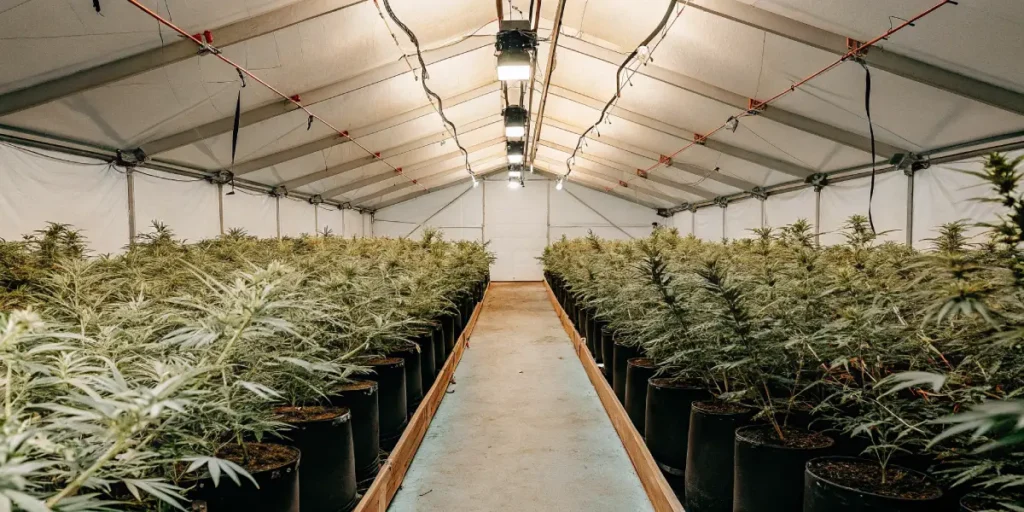
Harvesting & Drying Desfran the Right Way
When it comes to harvesting Desfran, timing is crucial to ensure the best possible quality and potency. Desfran, being a pure Sativa Dream strain, typically has a longer flowering period than other cannabis strains, often taking between 9 to 12 weeks. It’s essential to monitor the trichomes, which are tiny, crystal-like structures on the buds. A good time to harvest is when the majority of trichomes have turned from a clear to a milky white color, with some turning amber. This indicates peak THC levels, providing the potent and energetic high Desfran is known for.
Once you’ve decided the time is right, ensure you have the right tools ready, like sterilized pruning shears for clean cuts. Begin by cutting the plant at the base, and remember, patience is key. Handle the plants gently to prevent trichome damage. Trim off the larger fan leaves initially, which will simplify the drying process. Some growers prefer to wet trim, removing the sugar leaves right away, while others opt for dry trimming later. Each method has its advantages, with wet trimming being tidier, while dry trimming can sometimes enhance the bud’s aromas.
The drying process is pivotal in preserving Desfran’s rich flavor and potency. Hang the branches upside down in a dark, ventilated space. The ideal temperature for drying is between 60-70°F (15-21°C) with a humidity level of 45-55%. It’s vital to maintain air circulation to prevent mold formation. Avoid rushing this process; typically, it takes about 7 to 14 days for the buds to dry thoroughly. You’ll know they’re ready when the smaller stems snap instead of bending.
After drying, the curing phase begins, which further enhances the quality of Desfran. Place the dried buds in airtight jars, filling them up to ¾ full to allow airspace. Keep these jars in a cool, dark place, and open them daily for about 10-15 minutes during the first week to let excess moisture escape and fresh air in. This burping process is essential to prevent mold and to promote even curing. After this initial week, reduce the burping frequency to once every few days for the next two to three weeks.
By meticulously harvesting and drying Desfran, growers can maximize the strain’s potential, capturing its exotic aromas and intense psychoactive effects. Patience and attention to detail throughout this process ensure that each Desfran harvest is a rewarding experience, delivering the exceptional quality this legendary strain is known for.
Desfran Strain Type: Indica, Sativa or Hybrid?
Desfran is a remarkable cannabis strain that is classified predominantly as a Sativa. Known for its potent effects and invigorating characteristics, Desfran finds its origins through the crossing of several strains, notably rooted in landrace genetics from South America. Sativa strains, like Desfran, are distinguished for their cerebral effects, which are often described as uplifting and energizing. This strain is especially appealing for those seeking a stimulating experience, making it popular among users who enjoy creativity and enhanced focus.
One of the defining attributes of Desfran, as a pure Sativa, is its growth pattern. Sativa plants typically grow tall with long, thin leaves, and Desfran is no exception. Cultivators appreciate this strain for its vigorous growth and towering stature, which can make it a bit of a challenge when grown indoors due to the need for adequate vertical space. Additionally, the flowering time for Desfran tends to be longer compared to Indica strains, typically taking around 9 to 12 weeks, a characteristic trait of Sativa plants.
The effects of Desfran, aligned with its Sativa heritage, are primarily cerebral and can be quite profound. Users frequently report an initial surge of euphoria and energy, making it an excellent daytime strain for activities requiring mental engagement. Unlike Indica-dominant strains, which are known for their body relaxation effects, Desfran delivers a more clear-headed high. This makes it suitable for users looking to stimulate their mind instead of being sedated. However, it’s important to note its potency and ensure a suitable environment for consumption, particularly for less experienced users.
Desfran’s classification as a Sativa strain reflects its energetic effects, growth characteristics, and extended flowering time. As a favorite among Sativa enthusiasts, Desfran continues to uphold its reputation for delivering an uplifting and intense experience. For growers and users alike, the strain’s pure Sativa lineage promises both challenges and rewards, with its high THC content and pronounced effects standing as testament to its well-regarded status within the cannabis community.
Why Grow Desfrán? Key Benefits for Cultivators
Desfrán is a renowned cultivar in the cannabis community, highly prized for its potent effects and exceptional growth characteristics. This variety, which traces its lineage to a pure South American sativa known as Destroyer, is celebrated for producing tall plants with a profusion of buds. For cultivators, Desfrán offers several compelling benefits, making it an attractive choice for both commercial operations and personal grows. Its vigorous growth pattern and impressive yield potential are key aspects that set it apart from other strains.
One of the primary advantages of growing Desfrán is its exceptional yield potential. Under optimal conditions, this sativa-dominant plant can produce large quantities of dense, resinous buds. Its lengthy flowering period, which typically ranges from 9 to 10 weeks, allows for the development of substantial flowers that can result in generous harvests. This high yield makes Desfrán a suitable choice for cultivators looking to maximize their output. The strain’s capacity to thrive indoors or outdoors further adds to its versatility and adaptability.
Desfrán is also renowned for its robust growth and resilience, which are valuable traits for cultivators. This strain is particularly resistant to common plant stressors such as pests, mold, and mildew, which can be a significant advantage in various growing environments. Its ability to withstand these challenges means that it requires less intensive care and can handle fluctuations in temperature and humidity more effectively than some other strains. This hardiness benefits both novice growers who are still learning the ropes and experienced cultivators who seek low-maintenance plants.
Moreover, Desfrán’s unique and highly desirable chemical profile makes it a standout in the cannabis market. Known for its intense psychoactive effects due to a high THC concentration, it is favored by consumers seeking a strong, cerebral high. Its complex flavor profile, which includes notes of sweet fruit, pear, and apple, ensures it also stands out in terms of taste. For cultivators, the marketability of such a potent and flavorful strain means it can offer a competitive advantage in a crowded marketplace.
Growing Desfrán presents numerous benefits for cannabis cultivators. Its capacity for substantial yield, alongside its resilience and market appeal, make it a solid choice for those considering a quality sativa variety. Whether you are an experienced grower or just beginning your cultivation journey, Desfrán provides a rewarding growing experience with the potential for high returns both in terms of quantity and quality.
Potential Challenges When Growing Desfran
Growing Desfran can be a rewarding yet challenging experience, even for seasoned cannabis cultivators. One of the primary challenges is its height and space requirements. Originating from a sativa-dominant lineage, Desfran plants can grow exceptionally tall, often reaching heights unsuitable for small indoor grow spaces. This makes it imperative to have adequate vertical space or to employ training techniques such as topping or low-stress training to manage its stature effectively.
Another significant challenge associated with cultivating Desfran is its lengthy flowering period. Unlike quick-flowering indica strains, Desfran takes approximately 9 to 10 weeks to complete its flowering cycle. This extended period necessitates careful attention to detail, as growers must maintain optimal environmental conditions such as temperature and humidity for a prolonged period. Failure to do so can lead to diminished yields and compromised plant health, requiring investment in reliable growing equipment.
Additionally, Desfran’s sensitivity to nutrient intake is a concern that growers need to address meticulously. Known for requiring moderate feeding schedules, over-fertilization can lead to nutrient burn, evidenced by yellowing leaves and stunted growth. Hence, it is advisable to start with a reduced nutrient regimen and gradually adjust based on the plant’s response. Regular monitoring of pH levels in both soil and water is crucial, as improper pH can obstruct nutrient uptake, further complicating the growing process.
Pest and disease management is another potential hurdle when growing Desfran, as its dense foliage can attract pests such as spider mites and whiteflies. Implementing integrated pest management strategies and maintaining proper airflow are essential preventive measures. Regularly inspecting plants for signs of infestation and employing organic pesticides when necessary can help mitigate these risks.
Finally, ensuring an optimal light schedule is crucial for Desfran, especially when grown indoors. As a photoperiod strain, it relies on specific light cycles to transition from vegetative growth to flowering. Inconsistencies in light exposure can lead to stress and hermaphroditism, affecting crop yield and quality. Therefore, investing in a reliable timer and lighting system can aid growers in overcoming this challenge effectively.
Is Desfran Worth Buying? Here’s What You Need to Know
Desfran is a revered strain in the cannabis world, known for its potent effects and vibrant growth characteristics. Originating from a cross of pure South American sativas, this strain boasts a compelling heritage that appeals to both consumers and cultivators. So, is Desfran worth buying? The answer largely depends on what you are looking for in a cannabis plant. If you are drawn to high-yield, fast-growing sativas, the strain might just pique your interest. Additionally, Desfran’s rich aromatic profile and versatile uses make it a popular choice among growers and users alike.
Growing Desfran can be a rewarding but demanding experience. It is a powerful indoor plant that thrives with ample space, making it suitable for growers who can provide plenty of room for its roots to stretch. The strain requires careful attention to detail, particularly in terms of lighting and nutrients. Desfran flourishes with substantial light and a well-balanced nutrient regimen, which can initially pose a challenge for novice growers. However, the strain’s resilience against pests and diseases gives it a slight edge for those with some experience in cultivation.
For consumers, Desfran offers a unique, invigorating experience characterized by a robust psychoactive punch. Its sativa-dominant nature manifests in effects that are stimulating and energizing, ideal for daytime use and creative endeavors. The strain exudes a fruity aroma reminiscent of its South American lineage, offering notes of pear and apple that complement its sweet flavor profile. Furthermore, many users report an elevation in mood and focus, making Desfran not just a strain worth growing but also one worth consuming for its uplifting effects.
Ultimately, whether or not Desfran is worth buying depends on your personal preferences as a grower or consumer. If you’re seeking a strain with high sativa character, rewarding yields, and a robust profile, Desfran may indeed be an excellent choice. However, bear in mind that achieving its full potential requires dedication to its specific growth demands. For those prepared to take on the challenge, Desfran offers satisfying rewards in both yield and quality. Its distinctive effects and flavors make it a versatile option for diverse consumption methods, including smoking, vaping, or even converting into concentrates and edibles.
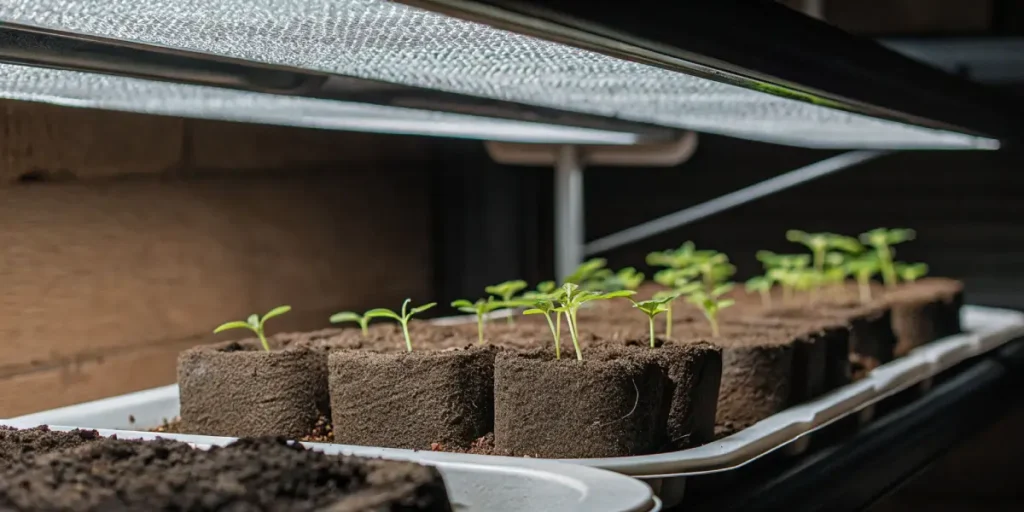
FAQs about Desfran
What is Desfran?
Desfran is a popular strain of cannabis known for its pure sativa properties. It is a derivative of a crossbreeding program involving mostly South American cannabis strains and is renowned for its energizing and uplifting effects. This strain is often sought after by enthusiasts looking for a potent and long-lasting psychoactive experience. The strain is characterized by its fruity aroma and sweet taste, making it a favorite for many users.
What are the effects of using Desfran?
Desfran is known for its strong cerebral effects, typical of a sativa strain. Users often report a surge of energy and creativity, making it an ideal choice for daytime use. The mental clarity and focus it provides can be beneficial for tasks that require concentration. Despite its uplifting nature, some users might experience paranoia or anxiety in higher doses, so moderation is advised for beginners.
How should Desfran be cultivated?
Desfran is acclaimed for being somewhat challenging to grow, typically requiring a warm and tropical climate. Those cultivating it indoors should be prepared for a longer flowering period, usually between 9 to 11 weeks. The plant demands a bit more attention and space compared to other strains, as it tends to grow tall and vigorously. Proper pruning and training techniques can help manage its height and ensure a healthy yield of dense, resinous buds.
What are the medicinal benefits of Desfran?
Desfran’s high THC content and sativa properties make it potentially beneficial for patients looking to alleviate symptoms of depression, fatigue, and stress. Its mood-enhancing qualities can be instrumental for those dealing with emotional disorders. Additionally, some users report that Desfran can help with minor pain relief, though it is not typically recommended for severe pain management due to its cerebral focus.
Are there any potential side effects of using Desfran?
Like many potent sativa strains, Desfran can produce side effects such as dry mouth and eyes, which are relatively common and manageable with hydration. However, because of its intensity, some individuals may experience heightened anxiety or paranoia, especially if consumed in large doses or by those with a low tolerance. Users are recommended to start with small amounts to gauge their personal threshold and response to the strain.

